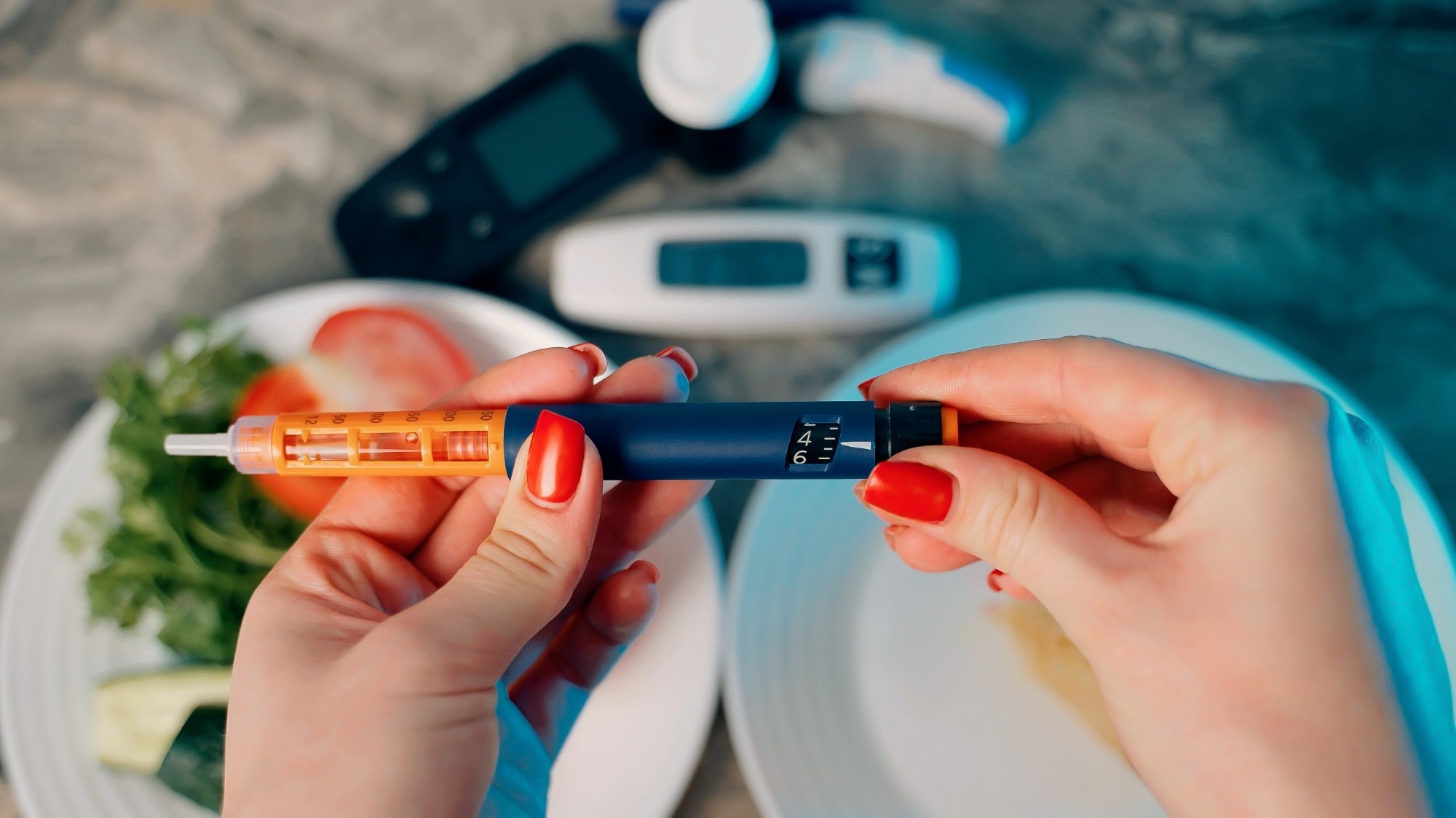In a recent study published in the journal EClinicalMedicine, a group of researchers investigated the long-term cardiometabolic effects of postprandial insulin hypersecretion over a 4-year period.
 Study: Future cardiometabolic implications of insulin hypersecretion in response to oral glucose: a prospective cohort study. Image Credit: VSh PRODUCTION / Shutterstock
Study: Future cardiometabolic implications of insulin hypersecretion in response to oral glucose: a prospective cohort study. Image Credit: VSh PRODUCTION / Shutterstock
Background
While fasting hyperinsulinemia is commonly seen as a sign of insulin resistance, the implications of postprandial hyperinsulinemia remain debated. Although essential for glucose balance, there is concern that excessive insulin response after eating might lead to adverse cardiometabolic effects, potentially contributing to obesity and insulin resistance. Recent studies have presented conflicting views: some suggest that postprandial insulin levels, adjusted for blood sugar levels viz Corrected Insulin Response (CIR), might be linked with better fat distribution and lower diabetes risk despite a possible increase in BMI. However, there is a lack of long-term studies exploring the future cardiometabolic impact of such insulin responses. Further research is needed because the current understanding of postprandial hyperinsulinemia's effects, particularly glucose-corrected insulin responses, is limited and conflicting, necessitating longitudinal studies to clarify its role in the early stages of type 2 diabetes development and overall cardiometabolic health.
About the study
In the present cohort study, a diverse group of pregnant women with a broad glucose tolerance spectrum were recruited for cardiometabolic testing spanning several years postpartum. The participants, drawn from obstetrics clinics and an academic hospital in Toronto, Canada, underwent testing late in their second trimester.
The women underwent follow-up assessments at 3 months, 1 year, 3 years, and 5 years postpartum. Each visit involved a 2-hour 75 g oral glucose tolerance test (OGTT), along with measurements of anthropometry, lipid profiles, and C-reactive protein (CRP). These evaluations were crucial in understanding the changing cardiometabolic risk factors over time.
The Mount Sinai Hospital Research Ethics Board approved the study protocol to evaluate insulin sensitivity, resistance, and beta-cell function. Specific insulin was measured on the Roche-Elecsys-1010 immunoassay analyzer. The Matsuda index and homeostatic model assessment for insulin resistance (HOMA-IR) were used to assess whole-body insulin sensitivity and resistance, respectively. Beta-cell compensation was evaluated using the Insulin Secretion-Sensitivity Index-2 (ISSI-2) and the insulinogenic index/HOMA-IR. The blood glucose tests also provided a clear picture of the participants 'glucose tolerance, categorized according to Diabetes Canada Clinical Practice Guidelines.
Participants also underwent physical examinations and had their weight and waist circumference measured. They completed a Baecke questionnaire evaluating the level of exercise they achieved over the course of the prior year. The study measured the CIR at 1 year and cardiometabolic risk factors thereafter.
Statistical analyses stratified the population into tertiles based on CIR at 1 year postpartum. These analyses assessed differences across groups and evaluated mean-adjusted levels of cardiometabolic risk factors. Multiple linear regression models were used to compare these risk factors between tertiles, adjusting for various factors like age, ethnicity, and family history of diabetes. Sensitivity analyses were further adjusted for a history of gestational diabetes mellitus (GDM), physical activity, and breastfeeding duration.
The study's logistic regression analyses looked at pre-diabetes or diabetes at 3 and 5 years postpartum, considering the baseline CIR tertiles and other clinical risk factors. This comprehensive approach allowed for a better understanding of the cardiometabolic changes occurring in these women over the study period.
Study results
The study enrolled 306 women during the period from October 2003 to March 2014, investigating whether insulin secretion affected cardiometabolic outcomes. The study divided these women into tertiles of CIR at one year postpartum. There were no significant differences concerning clinical and cardiometabolic characteristics among the participants across CIR tertiles. However, an interesting finding was the lowest GDM prevalence in the highest CIR tertile.
At the one-year mark, a progressive increase in waist circumference was observed from the lowest to the highest CIR tertile. This pattern was accompanied by increased CRP and a decrease in high-density lipoprotein (HDL). However, no significant differences were noted in body mass index (BMI), physical activity, or breastfeeding duration. Insulin sensitivity/resistance also worsened across CIR tertiles, yet an improvement in beta-cell function and a decrease in fasting and 2-hour glucose levels were observed in the highest tertile.
Three years into the study, some adverse features like lower HDL, higher CRP, and higher HOMA-IR were attenuated, but the benefits of better beta-cell function and lower glucose levels persisted. The prevalence of pre-diabetes or diabetes decreased progressively across the CIR tertiles. Five years later, the only adverse feature associated with higher baseline CIR was increased HOMA-IR, whereas positive aspects like better beta-cell function, lower glucose levels, and reduced pre-diabetes or diabetes prevalence remained consistent.
Further analysis adjusted for various factors showed no significant differences between the CIR tertiles in BMI, waist circumference, lipids, CRP, or insulin sensitivity/resistance at three and five years. However, a stepwise increase in beta-cell function and a decrease in fasting and 2-hour glucose levels were notable in the higher CIR tertiles.
The study also found that the highest CIR tertile at one year was an independent predictor of better beta-cell function and lower fasting glucose at both three and five years. This pattern was not significantly related to adjusted 2-hour glucose at three years but was at five years. These associations remained consistent after adjusting for physical activity, breastfeeding duration, and history of GDM.
Logistic regression models revealed that the highest CIR tertile at one year significantly predicted a lower risk of pre-diabetes or diabetes at both three and five years. This finding held true even when restricted to women with normal glucose tolerance at baseline.